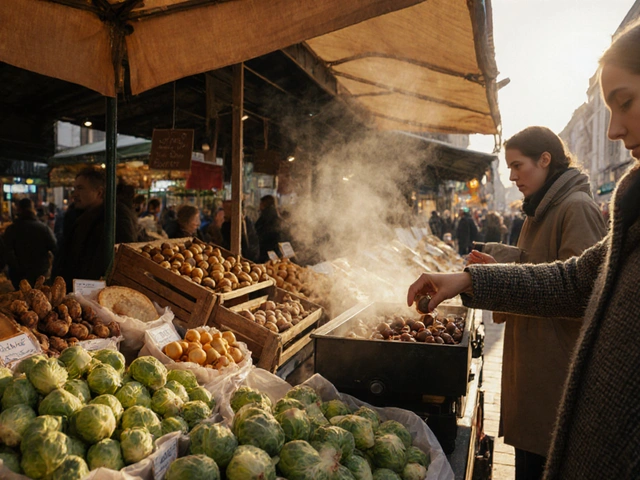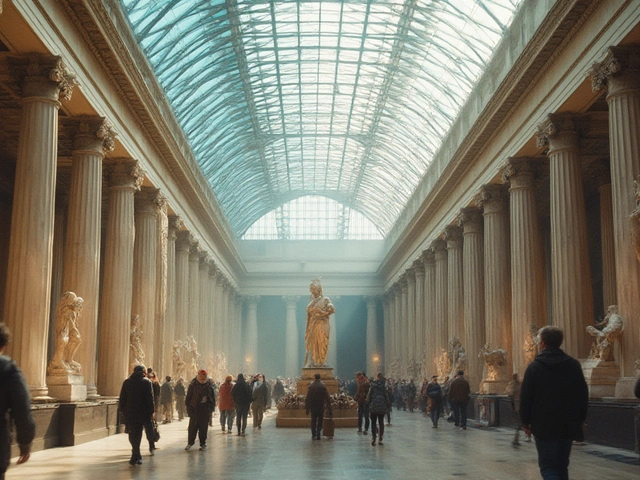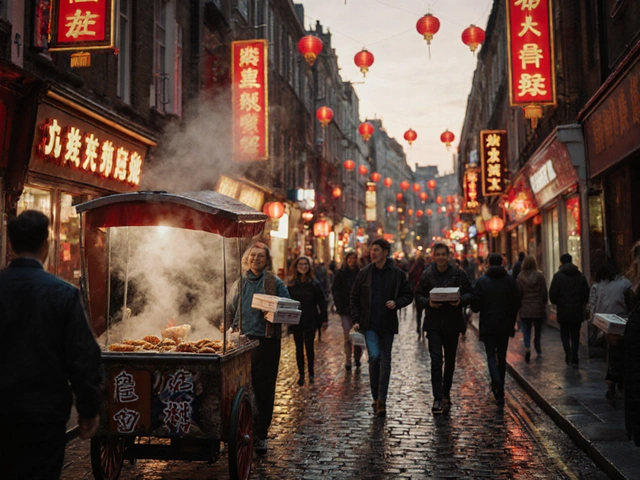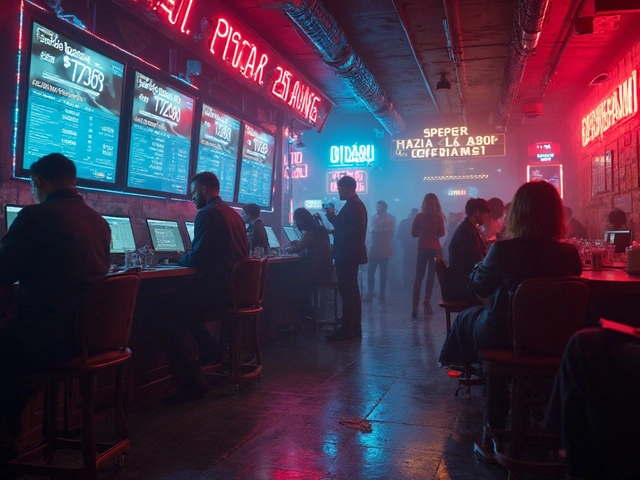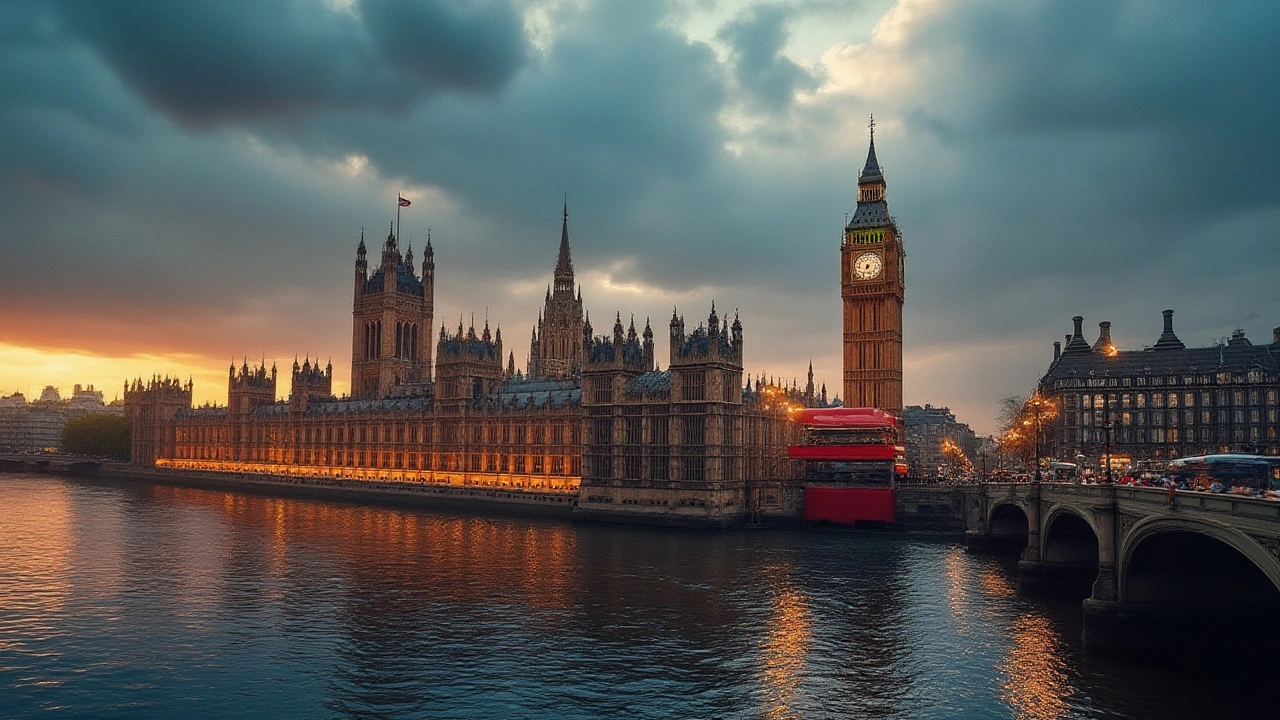
Among the heaps of sightseeing spots scattered across London, there’s one instantly recognisable silhouette on the Thames that can stop locals and tourists alike in their tracks: the grand outline of the Houses of Parliament, or as many Londoners say, the Palace of Westminster. It juts out between the London Eye and Westminster Abbey, forever tied to iconic photos and film backdrops, but there’s way more to its story than most postcards let on. In many ways, this building is the stubborn heartbeat of the whole city—a place that has seen more drama, power struggles, scandal, and reinvention than anywhere else in the capital.
Let’s take a waltz through the busy corridors of London’s government past and see how we got from medieval relics and riverside chaos to today’s world-famous sight—a place that, even now, shapes what it means to live and work in London.
The Medieval Roots and the Rise of Westminster
When people picture the Houses of Parliament, those soaring Gothic towers usually dominate. But the story actually starts way back with a much more ramshackle, medieval complex—a clutch of knock-together timber buildings, beer- and eel-stained, closer to a riverside shanty town than you might imagine. In the 11th century, when King Edward the Confessor set up shop in Westminster (then well outside of old Roman London), he planted the seed for what would become the center of power in England. The Palace of Westminster was, for centuries, basically a royal home and somewhere for the king to hold court, play politics, and sometimes, tragically, escape plagues that swept through the crowded City of London further east.
One odd truth is that the original Hall—the chunk known as Westminster Hall—is still there today despite everything: fires, wars, and even the Blitz. Go take a look if you’re near Westminster tube; it’s a huge, barnlike space with a herringbone floor and a hammer-beam roof hailed as a marvel of medieval engineering. It’s also the last place where Guy Fawkes was tried after the Gunpowder Plot, and more recently where Queen Elizabeth II lay in state. In the Middle Ages, the Hall’s adjacent buildings were a bustling mess of kitchens, stables, and little chambers where courtiers and bureaucrats mixed. If you work near Whitehall or go to the South Bank, you’re still walking in their faded footprints.
The real turning point came in the 13th century when Parliament—a strange kind of hybrid court and council—started meeting regularly inside. They met on stone benches in chilly chambers, hammering out deals on taxes, land, and legal rights. The monarch’s nerves must’ve been shot just listening to the debates. By the 1300s, having ‘a seat at Westminster’ started to mean something for medieval power-brokers. Think of it as the original “getting a table at Soho House”—you weren’t on the inside unless you had a say at the Palace of Westminster.
The actual grounds looked nothing like the well-manicured riverside walk you’d see today. Back then, floods were common, and plenty of local market traders would set up in the shadow of the Hall, flogging roast chestnuts in winter and pies all year round. Westminster as a district became known not just for the royals but for being scrappy, noisy, and deeply political—a tradition that somehow still survives in the chatter of local pubs, pre-election hustings, and endless pub quizzes about kings and rebels.
If you’re wandering through Victoria Tower Gardens, or even jetting by on a Thames Clipper, remember: you’re actually drifting past ground zero of London’s oldest parliamentary power. That connection between place and politics is what still sets Westminster apart as the spiritual—and sometimes rowdy—capital inside a capital.
The Great Fire, Victorian Ambitions, and Reinvention
Every Londoner knows the city is no stranger to fire—just ask anyone who’s seen the Museum of London’s old exhibitions about the 1666 blaze. But for the original Houses of Parliament, disaster came even later, in 1834. The Great Fire of Westminster tore through centuries of history and left the Palace in ruins, its fate uncertain. But out of the ashes came the version of Parliament that Londoners cherish (and snap selfies with) today.
The government, realising they needed a fresh, iconic home, sparked a public design competition. Charles Barry won with a plan dripping in Gothic flair, backed up by Augustus Pugin’s obsessive taste for detail: dizzying spires, intricate stonework, stained glass everywhere. If you’ve ever queued at the visitor entrance and squinted at the endless ornate carvings, you’re seeing their legacy up close. Pugin himself worked like mad on the interiors, sometimes sketching by candlelight. Fun fact: he actually died young, exhausted by the endless demands of Parliament’s construction. When Londoners say things move slowly in government, they’re literally standing in his over-decorated shoes.
The new Palace took decades to finish and was a proper Victorian marvel. Material for the reconstruction came from specific British sources, like Magnesian Limestone only quarries in Yorkshire. Every detail seemed to declare: “This is what modern Britain looks like.”
It’s funny now, but locals in the 19th century found the new towers so impressive, they rivalled the city’s church spires—Big Ben began chiming in 1859 and quickly became the unofficial voice of London, marking both solemn state tasks and every footy final since. The whole building glows golden at night, which was a handy guide for late-night taxi drivers heading towards Trafalgar Square in the foggy gloom.
Parliament Square, just outside, became the place for every sort of political demonstration. If you’ve ever cycled through on a weekday (sorry, that traffic’s not new), you know it’s always thrumming with debate and protest, from Anti-Apartheid marches in the ‘80s, to recent climate rallies and Love Actually-style placards. The area’s pubs such as The Red Lion pride themselves on being the “third chamber” of Parliament—MPs and journalists have been swapping secrets (and pints) there for over a century.
| Year | Event or Change | Cultural Impact |
|---|---|---|
| 1065 | Westminster Hall built | Medieval law & coronations |
| 1295 | First Model Parliament meets | Birth of representative government |
| 1834 | Great Fire destroys old Palace | Victorian redesign & urban renewal |
| 1859 | Big Ben finished | London’s timekeeper, icon for generations |
| 1940-41 | WWII Blitz damages Commons | Emergency sessions, Churchill’s speeches |
| 2025 | Ongoing restoration project | Debates about preservation, climate-proofing, and costs |
If you’re ever heading down to the Thames or popping into one of the political bookshops nearby—especially in April, when cherry blossoms line the river—you’re living through a scene built on fire, vision, and stubborn Victorian ambition.
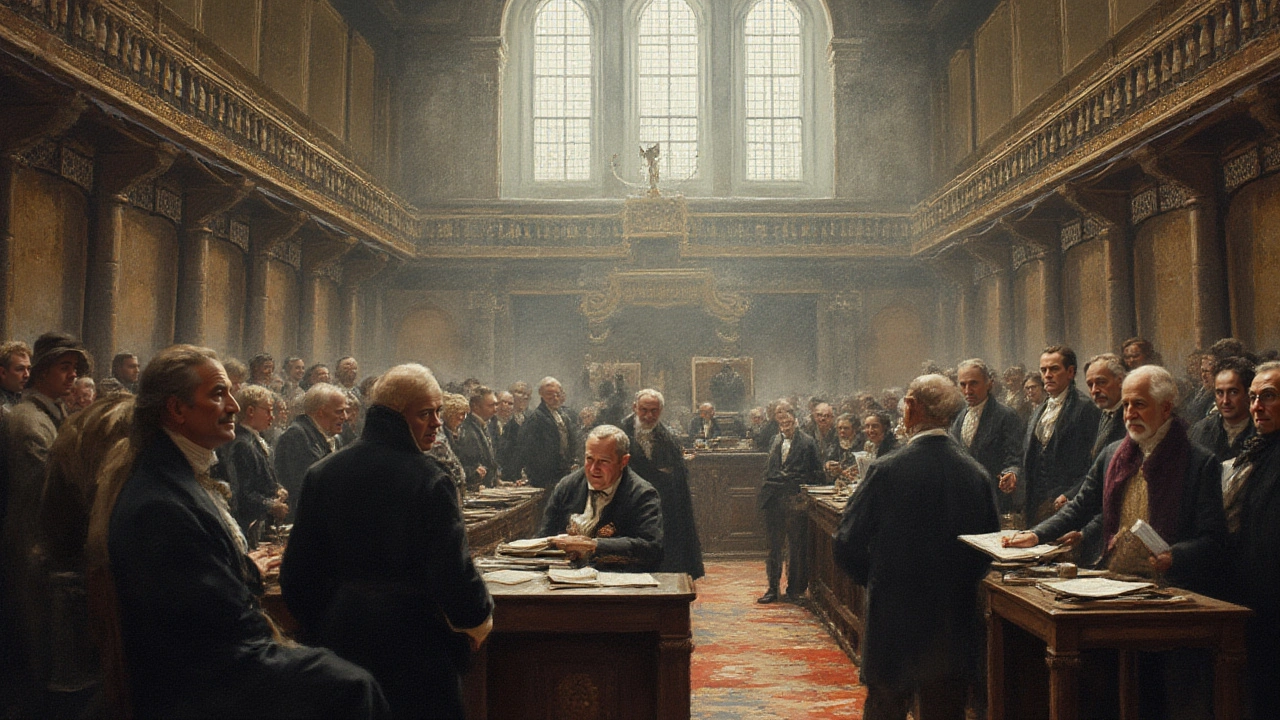
Surviving Wars, Modernisation, and Public Life
Between the Blitz and the Cold War, the Palace of Westminster took a serious beating. In May 1941, a Luftwaffe raid gutted the Commons Chamber. Instead of giving up, London’s government carried on—holding debates in the Church House and even in Westminster Hall itself. Winston Churchill, never one for understatement, insisted they rebuild “as nearly as possible in the style of the old Chamber.” That stubbornness is legendary, and to this day, visiting school groups and tourists marvel at how seamlessly old and new blend together in the heart of Westminster.
After the war, every Londoner knew someone who’d been involved in repairs to Parliament—the scaffolding was a city landmark by itself. Meanwhile, the building’s status shot up: BBC broadcasts from Parliament began in earnest, beaming debates to radios and, eventually, TVs in pubs all over the city. Suddenly, you didn’t have to be an MP’s aide to get the latest news—it was piped into your local chippy or East London café.
The Palace has seen thousands of protests and vigils on its doorstep. London’s policing, traffic controls, and even bus routes have shifted in response to big moments on Parliament Square. Schools arrange field trips not just for the tourist spectacle, but so kids get a concrete sense of citizenship—who makes the rules and how the sausage gets made, right in the heart of Westminster. If you’ve braved summer crowds outside Big Ben or the security queues at the Cromwell Green entrance, you know: this is as London as it gets.
Yet the building itself has never stood still. Restoration is basically a permanent project (and budget headache). Right now, engineers are racing to fix leaks, electrical faults, and even save endangered stonework. Parliament has trialed things like eco-friendly lighting, pigeon-safe roof deterrents, and green travel plans for staff. After covid lockdowns, they even rolled out new systems for remote working, so laws could be debated both in the Chamber and via video calls from MPs’ kitchens across greater London. It’s weird seeing MPs in hoodies, but that’s the new Parliament look.
Here’s a quirky tip for locals: sometimes, the best views are at dawn. If you fancy an early walk or cycle, try the Lambeth Bridge side. You’ll see the Palace reflect across the Thames, with barely a car or selfie stick in sight—an ancient fortress waking up for another day of argument and history-making.
The Houses of Parliament in Today’s London Life
London traditions always find a way to adapt, and the Houses of Parliament are living proof. The building’s presence is everywhere—from Monopoly boards to the skyline on BBC weather graphics. Waiting for the Elizabeth Line at Westminster station? Faint echoes from centuries of political scuffles float above the heads of city commuters, schoolkids on field trips, and businesspeople meeting for a Pret on Bridge Street.
One thing many Londoners don’t realise: you don’t need a ticket to a debate to enjoy Parliament’s gardens or riverside. Victoria Tower Gardens is open to the public, perfect for lunch breaks, peaceful views of the Thames, or explaining to visiting mates what on earth the Buxton Memorial is for. The area is usually humming with joggers, dog-walkers, and buskers, a far cry from the centuries when it served as marshy royal land where ducks outnumbered people.
Parliament has become a centrepiece for big annual events. On New Year’s Eve, Big Ben’s chimes kick off fireworks you can spot all the way from Primrose Hill to the South Bank. During Remembrance Week, the area hosts the iconic Poppy Appeal—almost half the city wears paper flowers pinned to their coats, silently marking the building’s deep-rooted national symbolism. Just last May, it was the backdrop to protests about climate action, with Extinction Rebellion covering the green with tents, juggling workshops, and eco-speeches—there’s nowhere else in London you’d see such a mashup of history, street theatre, and serious debate.
If you want to step inside the heart of it all, the Houses of Parliament run frequent guided tours. They’re honestly worth the ticket (lots of slots for Londoners, especially during the summer recess). You’ll see everything from the Speaker’s throne to the tiny members’ lobby where even Prime Ministers have been known to get lost. And don’t miss the gift shop—nothing says “office Secret Santa” like a House of Commons mug or a tea towel printed with the rules of debate.
The debates and arguments happening in those chambers shape the daily life of every Londoner, from housing policies along the Thames to the bus routes in the outskirts. Plenty of the best street names in the city—like “Old Palace Yard”—are living links to the decisions made inside. And more than a few London-based brands and theatres have riffed on that Parliament energy, turning politics into entertainment: think of shows like “This House” at the National Theatre or even the never-ending political satire on BBC’s “Have I Got News For You.”
At the same time, the Palace is always under threat—flood risks, rising maintenance costs, and discussions over how to make the building greener in a city that takes climate pledges seriously. As debates over a potential move or long-term closure loom (imagine MPs trying to host Prime Minister’s Questions from a pop-up in Croydon), Londoners themselves are weighing in with ideas about how to keep Westminster relevant for the next generation.
For all the grandeur and tradition, the Houses of Parliament are the most continuously evolving building in London, patched up and reimagined by every age. The city’s daily pulse—loud, stubborn, impossible to ignore—echoes around its ancient bricks, making sure those debates aren’t just relics of the past. Next time someone asks why Londoners care so much about what happens in Westminster, just point at the river, the crowds, the endless news stories, and say: it’s Houses of Parliament business, and absolutely everyone’s invited.

